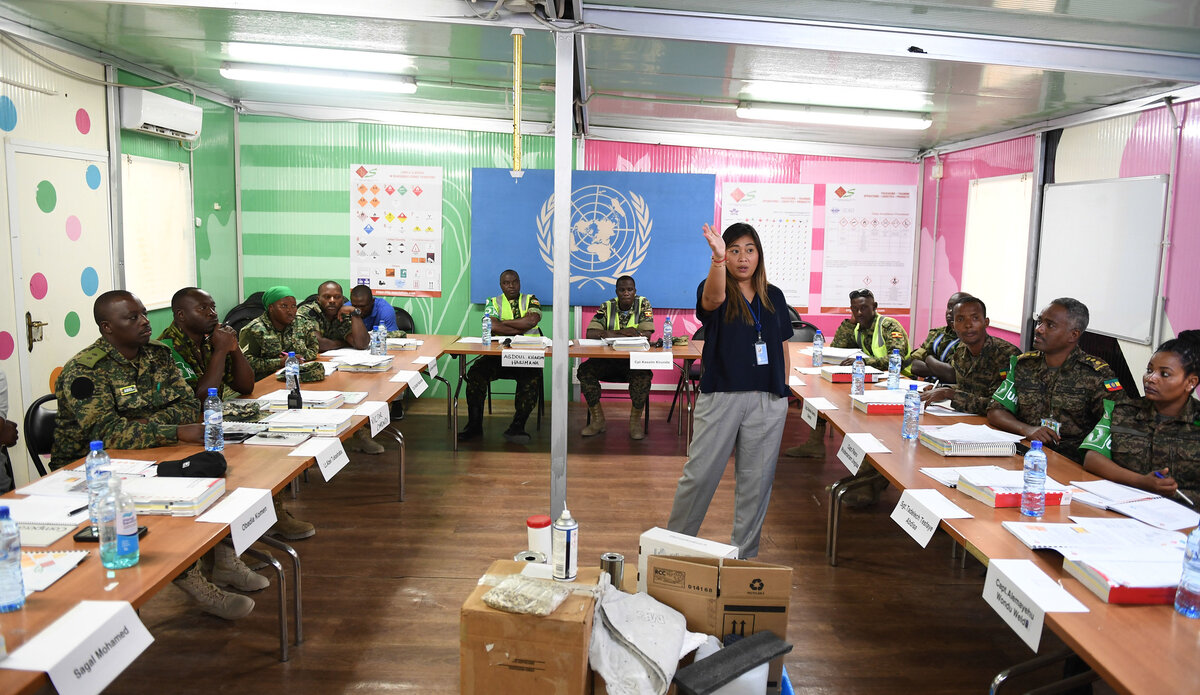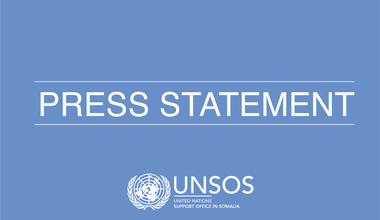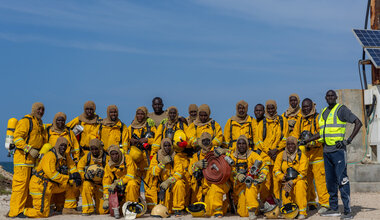UNSOS trains ATMIS and MOVCON staff on how to handle dangerous cargoes
Mogadishu – Nadia Omar (not her real name) swapped her youthful ambition of working in public health for a career in aviation and is now based at the United Nations terminal at Mogadishu’s Aden Abdulle International Airport where she tracks flight manifests.
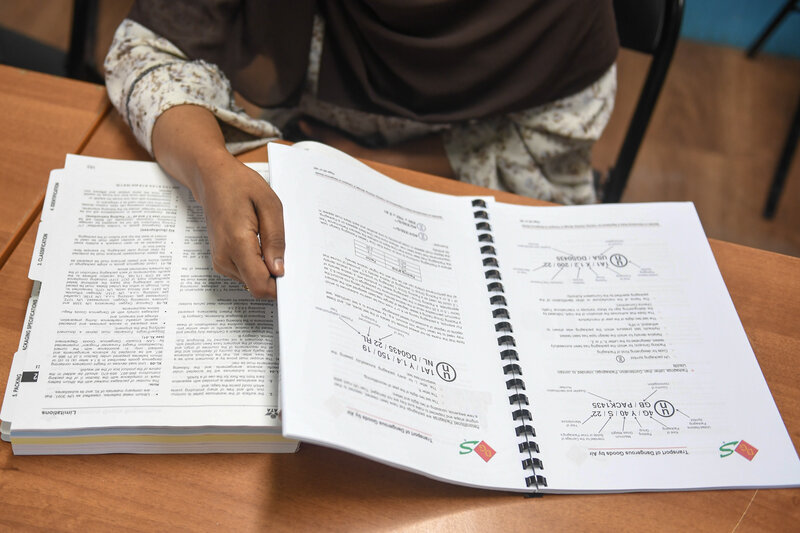
After graduating with a degree in public health, the middle-aged woman is now working with the Movement Control Unit (MOVCON), the United Nations arm responsible for coordinating the movement of cargo and personnel.
“I have developed an interest in the transport sector, and that is my hope into the future,” says Nadia, pointing to the clouds.
On this day, she is part of a group of 40 staff undergoing an intensive refresher course on the handling of dangerous goods transported by air.
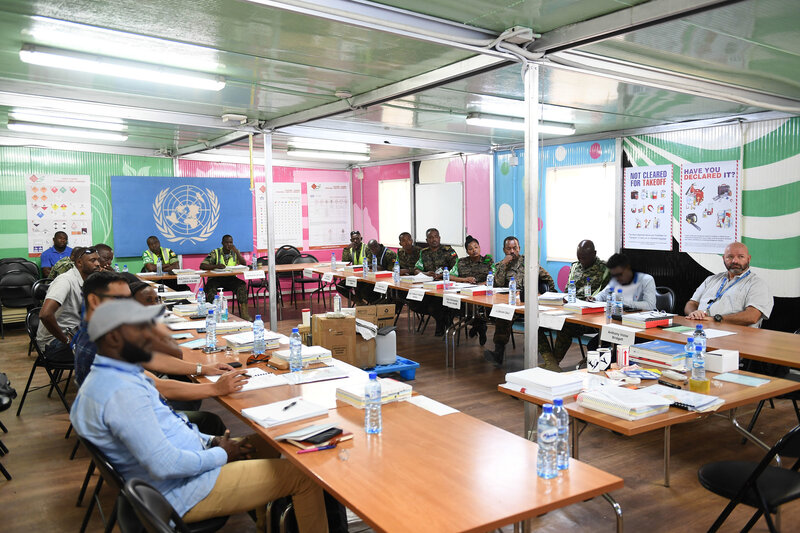
Facilitated by the United Nations Support Office in Somalia (UNSOS), the course is aimed at African Union peacekeepers and UN and civilian staff like Nadia and seeks to enhance knowledge and improve safety and security skills, as well as efficiency, in the transportation of hazardous cargo.

“The whole idea of this training is to ensure that the logistics arm of UNSOS which is movement control, adheres to the standards and regulations as stipulated by the International Civil Aviation Organization and International Air Transport Association,” said Kamlesh Taank, a certified dangerous goods expert.
The training is designed to increase the awareness of aviation staff about international standards and procedures for handling, preparing, and storing consignments. During peacekeeping operations, dangerous goods are routinely transported by air and handlers must receive proper guidance to avoid endangering aircraft or passengers.
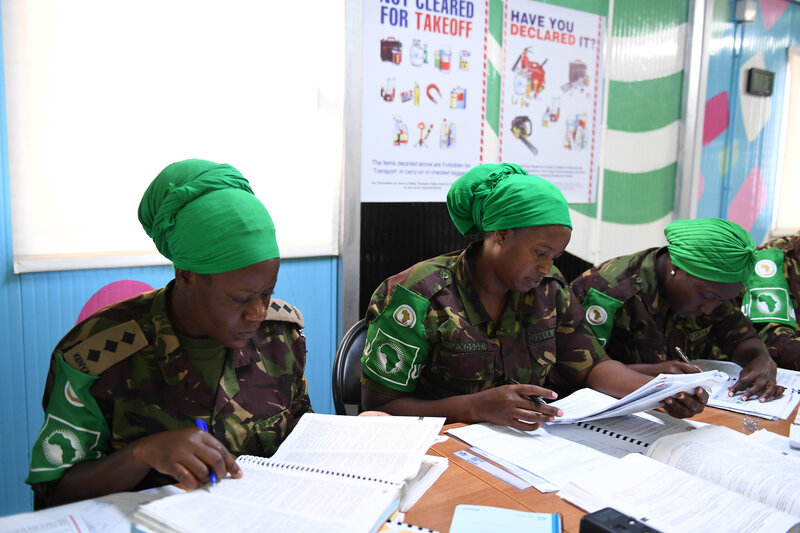
The participants of the course are equipped with skills in safety datasheets, general packing requirements, legal aspects, state and operator variations, and emergency procedures among others.
Obadiah Komen, a technical compliance officer, noted that the training is aimed at ensuring UNSOS operations in the Horn of Africa nation meet international standards.
“Refresher training keeps you on track to ensure that you have the right individuals handling the dangerous goods and that all paperwork is in order,” said Komen, adding: “Paperwork is the mother of all activities within the UN. If you do not have the proper paperwork, it indicates that mishaps may occur while handling dangerous goods. The majority of accidents occur as a result of inadequate or non-existent paperwork."
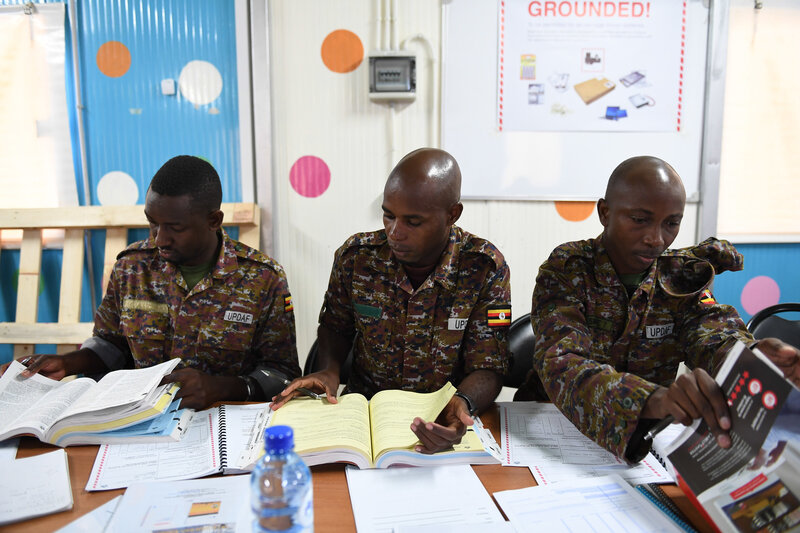
In the aviation industry, dangerous goods are classified into nine categories depending on their potential to endanger human health, safety, property, or the environment. These include explosives, gases, flammable liquids and solids, oxidizers, toxic and infectious substances, radioactive materials, corrosive substances, and miscellaneous dangerous substances.
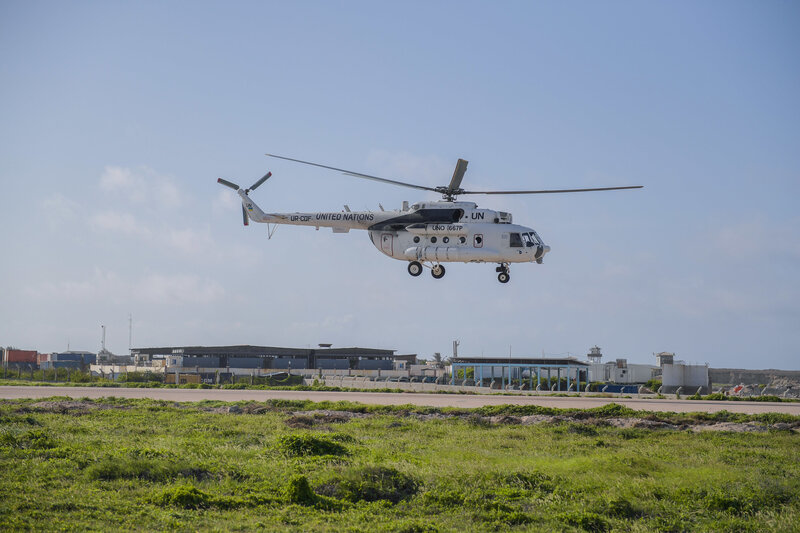
Dangerous goods usually require specialized transportation to eliminate the risk of damage to property or the environment. According to IATA, more than 1.25 million shipments of dangerous goods are carried by air each year.
"This training is vital because the military transports a lot of dangerous goods for battle, such as fuel and ammunition among others, " said Taank.
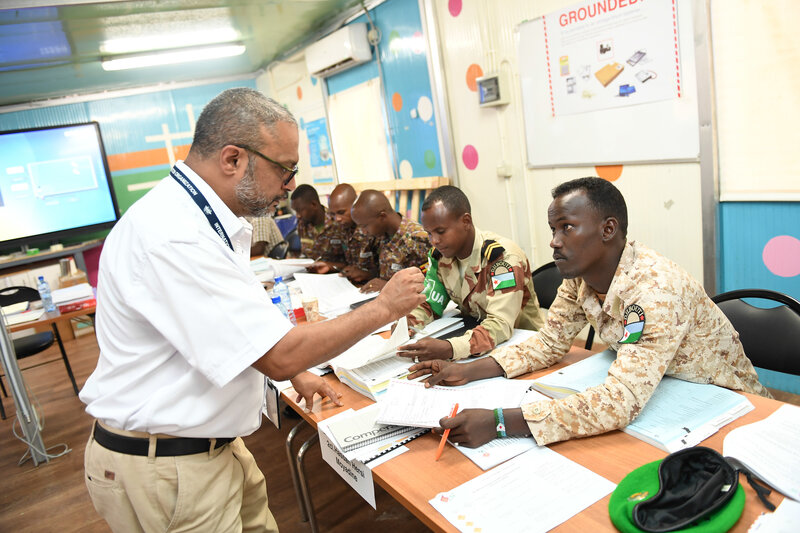
The training is part of IATA’s range of global regulations that are reviewed every two years for all those involved in the supply chain who prepare, provide, receive, and handle dangerous goods.
 UN
UN
